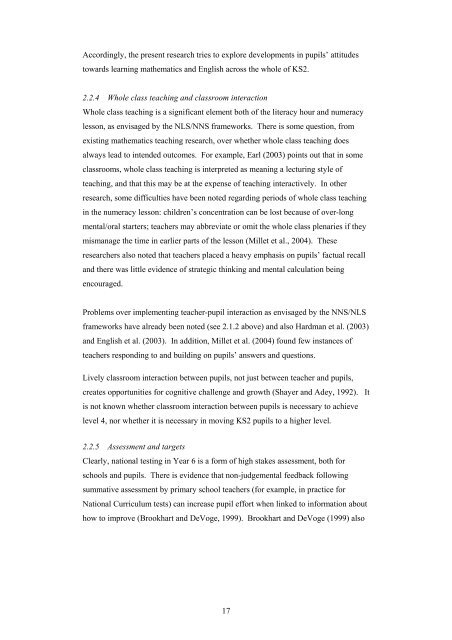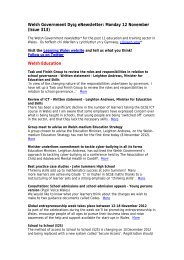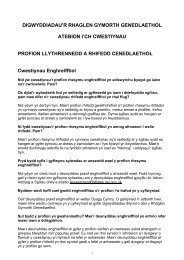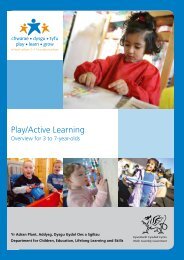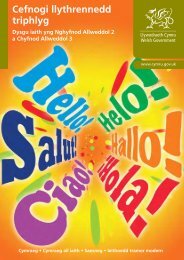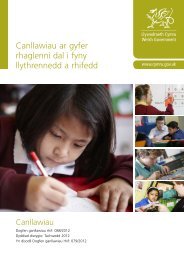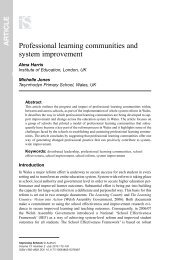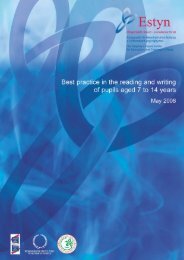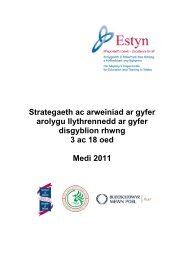Teaching Approaches to Promote Consistent ... - Learning Wales
Teaching Approaches to Promote Consistent ... - Learning Wales
Teaching Approaches to Promote Consistent ... - Learning Wales
Create successful ePaper yourself
Turn your PDF publications into a flip-book with our unique Google optimized e-Paper software.
Accordingly, the present research tries <strong>to</strong> explore developments in pupils’ attitudes<strong>to</strong>wards learning mathematics and English across the whole of KS2.2.2.4 Whole class teaching and classroom interactionWhole class teaching is a significant element both of the literacy hour and numeracylesson, as envisaged by the NLS/NNS frameworks. There is some question, fromexisting mathematics teaching research, over whether whole class teaching doesalways lead <strong>to</strong> intended outcomes. For example, Earl (2003) points out that in someclassrooms, whole class teaching is interpreted as meaning a lecturing style ofteaching, and that this may be at the expense of teaching interactively. In otherresearch, some difficulties have been noted regarding periods of whole class teachingin the numeracy lesson: children’s concentration can be lost because of over-longmental/oral starters; teachers may abbreviate or omit the whole class plenaries if theymismanage the time in earlier parts of the lesson (Millet et al., 2004). Theseresearchers also noted that teachers placed a heavy emphasis on pupils’ factual recalland there was little evidence of strategic thinking and mental calculation beingencouraged.Problems over implementing teacher-pupil interaction as envisaged by the NNS/NLSframeworks have already been noted (see 2.1.2 above) and also Hardman et al. (2003)and English et al. (2003). In addition, Millet et al. (2004) found few instances ofteachers responding <strong>to</strong> and building on pupils’ answers and questions.Lively classroom interaction between pupils, not just between teacher and pupils,creates opportunities for cognitive challenge and growth (Shayer and Adey, 1992). Itis not known whether classroom interaction between pupils is necessary <strong>to</strong> achievelevel 4, nor whether it is necessary in moving KS2 pupils <strong>to</strong> a higher level.2.2.5 Assessment and targetsClearly, national testing in Year 6 is a form of high stakes assessment, both forschools and pupils. There is evidence that non-judgemental feedback followingsummative assessment by primary school teachers (for example, in practice forNational Curriculum tests) can increase pupil effort when linked <strong>to</strong> information abouthow <strong>to</strong> improve (Brookhart and DeVoge, 1999). Brookhart and DeVoge (1999) also17


